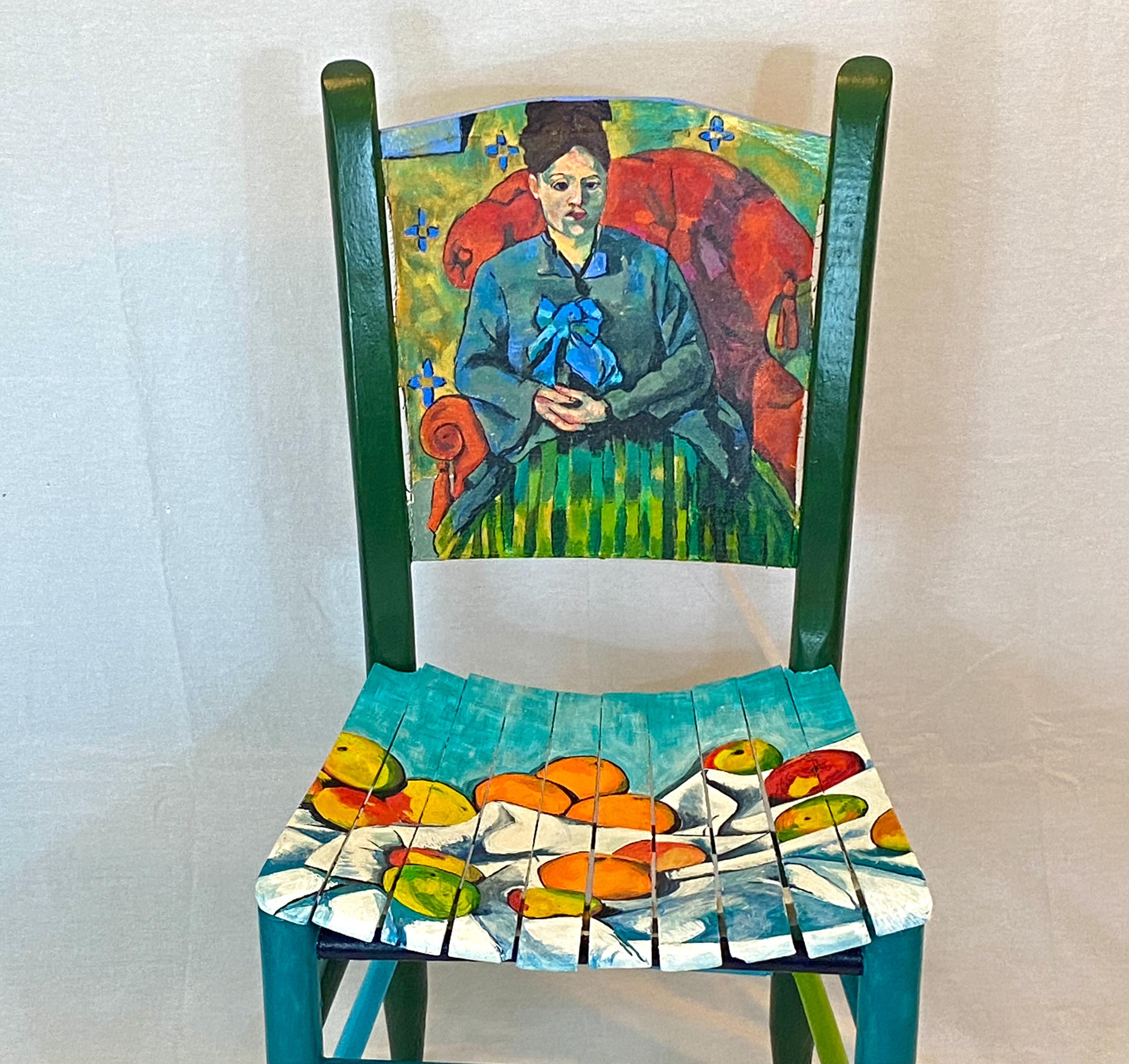Paul Cêzanne was a French Post-Impressionist painter and a leading figure in the Impressionist and Post-Impressionist movements. His post-impressionist work bridged the gap between Impressionism and Cubism. He's often called the "father of modern art" and is credited with inventing modern expressionism.
For artists whose work is figurative, it is essential to find good models. Some are paid, some are friends and even more are family members. Paul Cézanne was not different.
Cézanne’s wife, Hortense Fiquet, was his most frequent—and perhaps most patient—model, the subject of nearly 30 portraits. On the front of this colorful chair, the compressed space and blank facial expression make Madame Cézanne appear at once close and distant. Green touches of paint on her face replace more natural shadows, contributing to the work’s distinctively modern character. This approach to painting resonate with Cézanne’s own description of his work as a “harmony parallel to nature.”

The seat is a salute to Cézanne's more than 200 still-lifes of pears, apples and oranges haphazardly arranged on tables. Some setting are with patterned fabrics, some bare table. I am partial to the still-lifes on white linens.

The back of the chair is an amalgam of Cézanne's many paintings of Mont Saint-Victoire. The mountain is in Provence, France, east of Aix-en-Provence. Cézanne could see it from his home, so it is not surprising that he painted 80 watercolors and oil paintings of the mountain.

